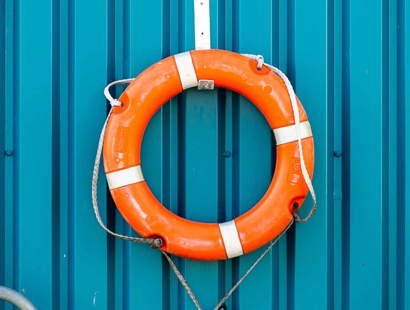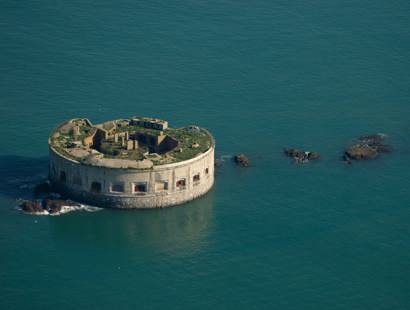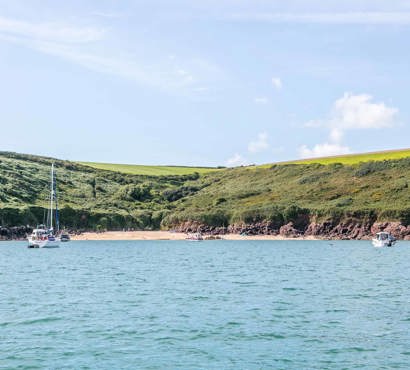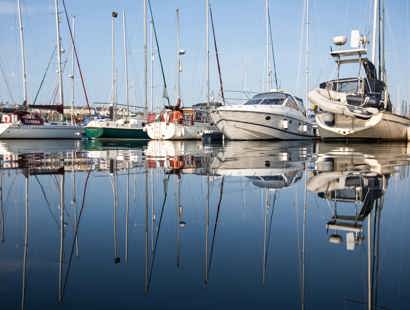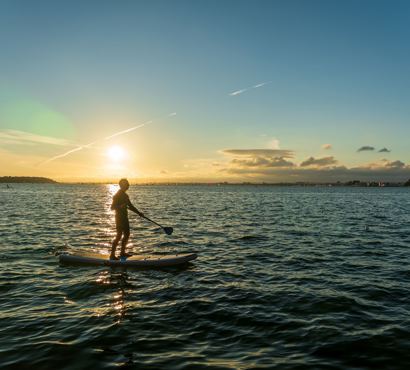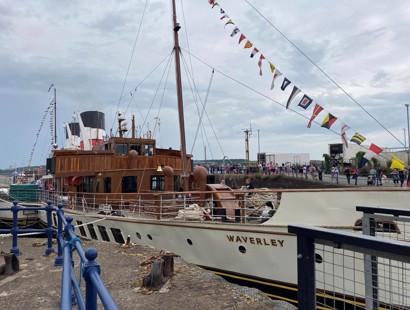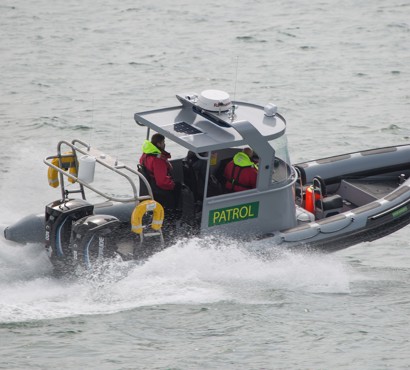What are the rules?
Just like on land, there are rules that must be followed at sea.
They are the International Regulations for Preventing Collision at Sea (1972). Known less formally as the ColRegs, they are a Highway Code for all vessels and are as applicable on the Milford Haven Waterway as they are in open water. In fact, you are more likely to be in close-quarters with other vessels in the Waterway so you need to know how to act and what your responsibilities are. Some of the key ColReg requirements are covered in Rules of the Road below but we would encourage all users to fully understand the requirements and to act accordingly while afloat.
In addition to the ColRegs, the Waterway has some specific bye-laws and directions which all users must be aware of, and adhere to.
Why follow the rules?
This is a busy waterway with both commercial and recreational traffic so you need to know your responsibilities. The rules are there to keep you, and others, safe. They are also a legal requirement and you can be prosecuted, and even sued, if you behave in such a way that breaks the rules or causes an accident.
What else should you do?
In addition to following the legal requirements, there are also safety measures you can take to avoid incidents.

Byelaws and enforcement
Bye-laws and Enforcement
The Port of Milford Haven is responsible for the navigation, safety and traffic regulation of all vessels navigating within the Waterway. This responsibility relates to both you as a recreational user and the commercial vessels regularly visiting and operating in the waterway. We use a number of tools to help us and these include the use of Byelaws, General Directions, Special Directions and Notices to Mariners.
As a recreational user you may not be as familiar with these tools as the commercial operators. It is however important that you familiarise yourself with them so a brief description of each is provided below.
Bye-laws applied to recreational and commercial vessels are specific to activity occurring within our area of jurisdiction and are applicable throughout the waterway. The current bye-laws came into operation in 1984 and 1987. Selected bye-laws with particular relevance to you as a recreational user are included in the Tide Tables.
Our full byelaws can be found here.
General Directions support the bye-laws and are orders made by the Harbourmaster to regulate the movement or navigation of all craft within the area of jurisdiction. The current General Directions came in to operation on 31st March 2016.
In addition to the requirements of MHPA bye-laws and General Directions, we may also issue, amend or revoke Special Directions in relation to the waterway or specific craft within the waterway. Special Directions can require craft to act in a particular manner or require certain actions to be carried out in relation to a craft.
We use Notices to Mariners (NTMs) to disseminate information to users. They are issued to advise of particular activities or situation which may impact on the safety of users or those carrying out activities. If appropriate a NTM may also contain requests for users to act in a particular manner in specified areas or at specified times.
The Water Ranger is primarily responsible for policing recreational craft on the waterway. Policing is conducted through waterway patrols, which are carried out on a regular basis throughout the season. The Water Ranger regularly patrols areas which are perceived as ‘hot spots’ for bye-law infringements, especially the Dead Slow Minimum Wake area upstream of the main water-ski area. Assistance with patrols is provided by other Port Authority vessels and the Dyfed-Powys Police Marine Unit if required. In addition to policing, the patrols provide water users with assistance and advice.
Infringements may be observed by our patrols or reported to us by members of the public and other users of the waterway. If you are involved in a minor infringement whilst in the waterway it is likely that you will be approached or contacted by one of our patrols. All reported infringements are logged and the patrol team will record details (which may include video or photographic evidence) of the infringement, craft and people involved. They will also explain the infringement to you and issue you with a Leisure User Guide if appropriate. In many cases this is sufficient action.
For more serious infringements or in cases of repeat offences you may be asked to provide a written statement. Statements may also be taken from those involved and witnesses. It is usual that following such offences details recorded (which may include photographic and video evidence) of the infringement and any other infringement you or your vessel have been involved in will be collated and reviewed and a more formal written approach adopted in dealing with the matter.
The marinas, boatyards and training providers on the waterway readily assist in supplying further information when required, which is then held on file. You should also be aware that Bye-laws and Directions are legally enforceable and the ultimate sanction is prosecution through the courts where fines not exceeding level 4 on the Standard Scale may be placed on offenders. (The current maximum fine under level 4 is = £2,500.)
Our ethos is that compliance will be achieved through education and persuasion. However, for those few persistent offenders recourse to the courts may be the only option.
Say hello
Our Water Ranger helps ensure safety on the Waterway. The team assist in the management of recreational craft moorings and the implementation of the Milford Haven Waterway Recreation Plan.
Undertaking regular patrols in the summer season, the Water Ranger provides information, advice and assistance to all waterway users. They also police the zoning systems and, where necessary, enforce bye-laws that seek to protect the safe and enjoyable recreational use of the Haven.
Whilst on patrol the Water Ranger can be contacted using VHF Channel 16 or VHF Channel 12 and can be approached for advice, information or assistance both on and off the water through enquiries@mhpa.co.uk.
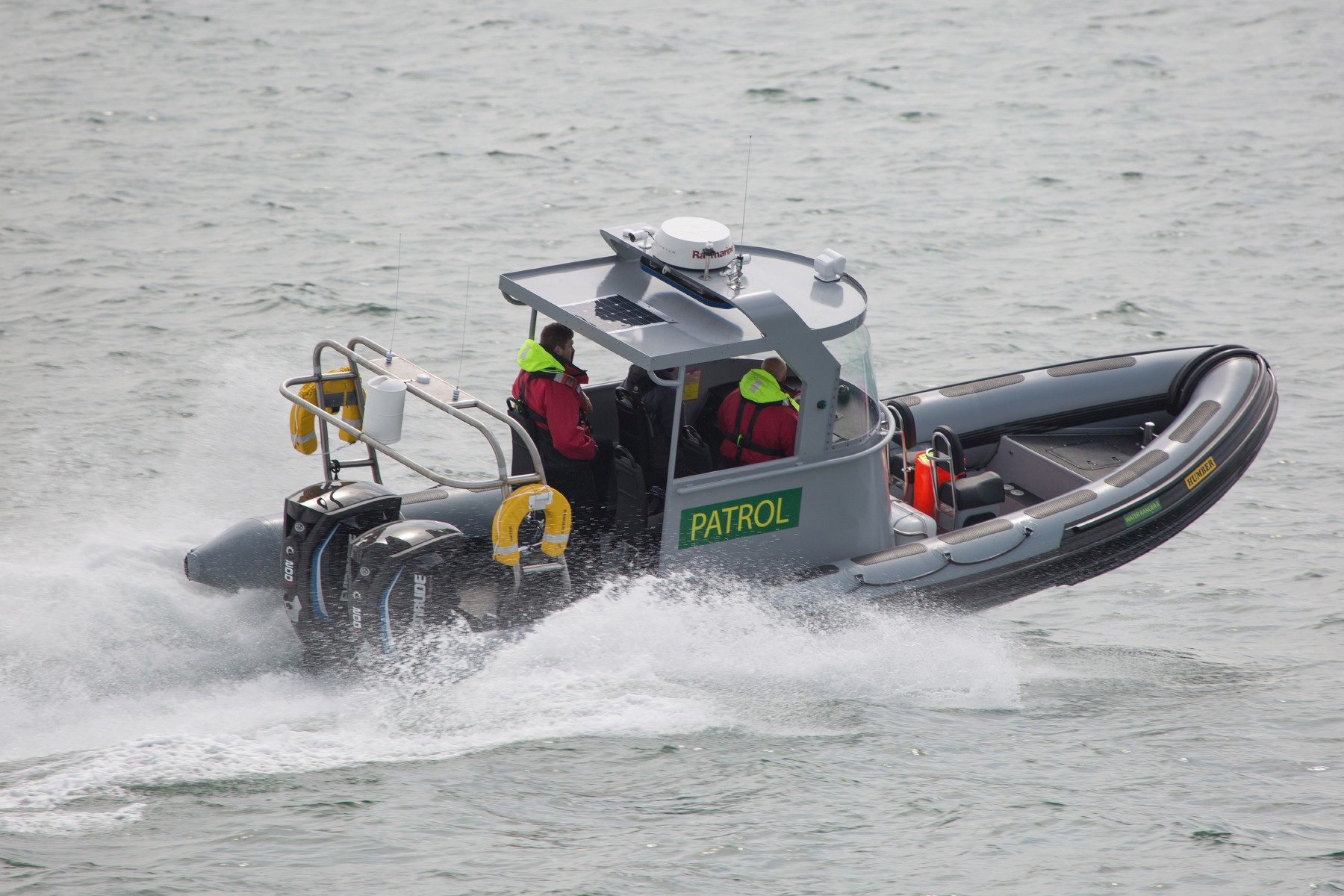

The Waterway's 'Rules of the Road'
Rules of the Road
Whether you are staying within the confines of the Waterway or venturing out to the surrounding coast you must be aware of the International Regulations for Preventing Collisions at Sea (commonly known as the COLREGS).
These regulations are in place to reduce the risk of collisions between vessels. These are in effect, the nautical alternative to the Highway Code. As a user of the Waterway you will interact with other craft and will have to react accordingly.
Keep a safe speed
All vessels must travel at a safe speed at all times. A safe speed cannot be expressed as a maximum or minimum number of knots because it varies with circumstances and conditions. You must continually assess the safety of the vessel’s speed.
A safe speed is one at which the vessel can be stopped in time to avoid any danger which arises suddenly. In judging a safe speed you must consider a number of issues.
Drive slowly in rain, fog, mist, smoke or glare. Special caution is required at night because many potential hazards may not be lit or may not be easily seen. Background shore lighting may confuse you.
Slow down on busy waterways and when near moored or anchored vessels, working vessels showing special signals and large vessels which have difficulties in manoeuvring. In the Waterway vessels secured to their moorings are not required to be lit at night and you should be aware of the location of such moorings. If you can avoid passing through or very close to moorings and moored vessels you should. However, if you have to you should pass slowly keeping your wash to a minimum and also keep a good look out.
Slow down in shallow areas or in unfamiliar waterways. In the Waterway, water depth can vary and change frequently. Not all hazards may be marked or lit and signs, buoys, marks or lights may have shifted.
May adversely affect the manoeuvrability of your vessel.
Stopping and turning ability depends on the speed travelled, wind and current and the boat’s design (such as hull shape, engine and propeller type and number).
You must be able to determine if you are exceeding a local speed limit. For example, if your boat is planing in a Dead Slow Minimum Wake area you will be exceeding the speed limit, so slow down.
Keep a proper lookout
A good lookout must be kept by sight and hearing and all means available.
You must be fully aware of the boating environment, especially in bad weather, restricted visibility or darkness. Don’t forget to look all around – even behind you.
Special care should be taken when operating your boat in areas where high speed vessels operate, such as water-ski areas. The situation can become dangerous very quickly due to rapid closing speeds, even if your vessel is travelling slowly. For example, a vessel going at 20 knots will cover more than 100 metres in less than 10 seconds and the speed of your boat may further decrease your time to react to avoid a collision.
Don’t confuse the lookout duties of the driver with those of the observer when the boat is towing a person on skis, tubes, etc.
The driver is responsible at all times for keeping a lookout for dangers.
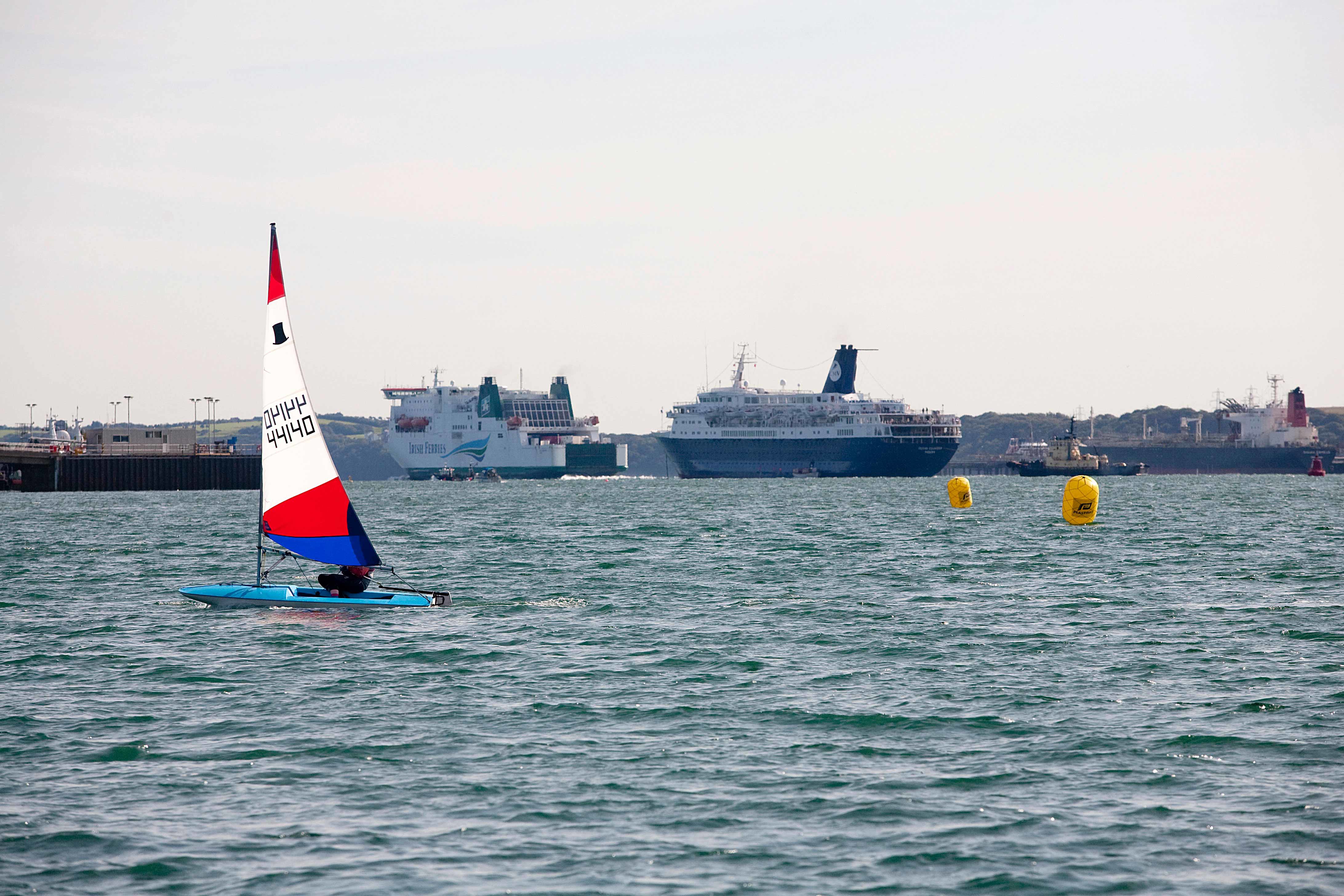
Responsibilities between vessels
You must continuously assess the risk of collision with other vessels. If you think there is a risk, you must take appropriate measures to avoid a collision. Do not create a dangerous situation by forcing your right of way.
Always try to leave a safe distance between you and other vessels, and remember the faster the speed, the greater your safe distance must be.
A vessel drifting is deemed to be underway and has no special right of way. It is required to comply with the International Regulations for Preventing Collisions at Sea.
A POWER-DRIVEN vessel underway shall keep out of the way of:
- A vessel not under command
- A vessel restricted in her ability to manoeuvre
- A vessel engaged in fishing
- A sailing vessel.
A SAILING vessel underway shall keep out of the way of:
- A vessel not under command
- A vessel restricted in her ability to manoeuvre
- A vessel engaged in fishing.
When altering course make your intentions clear to others as early as possible.
Sound signals may be used to indicate any manoeuvring intentions when vessels are in sight of each other.
A power driven vessel must give way to a sailing vessel unless the sailing vessel is in the process of overtaking it.

When two power driven vessels meet head on, each must alter course to starboard (to the right) and pass at a safe distance.

In crossing situations, give way to the right.

The give-way vessel must avoid a collision by changing course substantially, by slowing down, or stopping and allowing the vessel which has right of way to pass clear ahead. This must be done as early as possible.
NOTE: The master of the vessel which has right of way must maintain a lookout, maintain course and speed and be prepared to take action to avoid a collision if necessary.
Any vessel (including a sailing boat) which is overtaking another vessel must keep well clear of the vessel being overtaken.
You can overtake another vessel on either side but only when it is safe and you must stay well clear.
In narrow channels you must be particularly careful when overtaking.
In all instances, make sure you do not cut in front of the vessel you have overtaken.

When two sailing vessels have wind on different sides, the vessel with wind on the port side gives way.
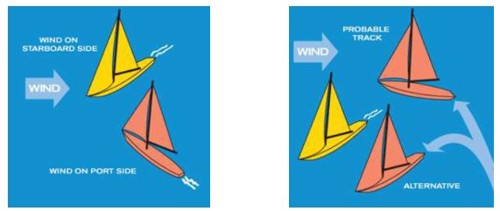
When both craft have wind on the same side, the vessel which is to windward shall keep out of the way of the vessel which is to leeward.
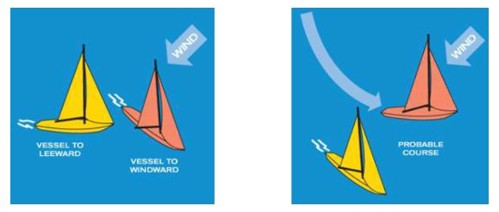
NOTE: If a collision appears inevitable, the skipper of each vessel must take proper action to avert the collision.
A safe distance between a vessel and a person or thing (including another vessel) is a distance that will ensure that the vessel will not cause danger or injury to the person or damage to the thing, having regard to all relevant safety factors including weather conditions at the time, visibility, speed of the vessel and obstructions to navigation that are present.
It should be noted that where a skipper is issued a penalty for breaching the distance off requirements referred to above and claims that even though this distance off was breached, the distance off was a ‘safe distance’, the onus is on the skipper to prove this in court.
In a collision, all masters involved can be held responsible even if the give-way vessel does not give way, because all masters are required to exercise caution and take avoiding action if the other vessel does not.

Stay safe on the water
Check out our tips on how to yourself, your passengers and other users of the waterway safe.



